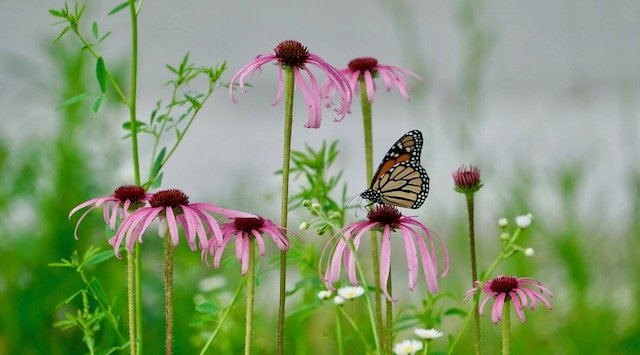By Brandi Petty - A Missouri Master Naturalist since 2016. She teaches conservation education for the state of Kansas at Southeast Kansas Nature Center.
Today I’m going to talk to you about one of my favorite creatures in our state and the only true flying mammal; that’s right--we’re going to learn about BATS! I’m not the only one to recognize how truly remarkable they are either. Bats use sonar to catch “insects on the wing” so efficiently that the US Navy has used their unique abilities when designing sonar technology. Of the fourteen species of bats that call Missouri home, all are insect eaters.
When I discuss bats with school groups, I like to describe them as furry little chicken nuggets. They’re adorable (at least the ones that live in MO). Bats are an invaluable resource, estimated to save the US economy alone $23 Billion dollars per year! Bats are a farmer’s (and camper’s) best friend. Each evening at dusk bats start their search for food. They eat up to half their body weight in insects each night. Nursing mothers tend to eat their full body weight.
Some farmers spend approximately $160 per acre to spray their fields with insecticides. Unfortunately, these pesticides are then ingested by bats which affect the bat’s tissues and nursing mothers’ milk. In a study cited by Bat Conservation International, of the bats collected in Indiana for suspected rabies only 5% came back positive, but all negative bats were tested for and returned positive for pesticide poisoning.
Bats need our help! Not only do they protect us from West Nile, which you are far more likely to get than rabies, they make our food safer and our environment cleaner and more balanced. Many farmers now recognize the service that bats provide them and are installing bat houses to draw bats to their fields. Maybe you could install one at your house? You can request a free bat house plan from MDC by visiting their website: https://mdc.mo.gov/ and look under free information forms.
Refer to our recent blog archive for information about a bat house installed at Redings Mill Bridge.


